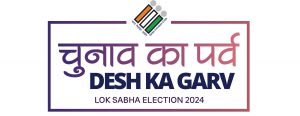PHYSIOGRAPHY
Goa’s main rivers are the Mandovi, the Zuari, the Terekhol, Chapora River and the Sal. The Mormugao harbor on the mouth of the river Zuari is one of the best natural harbors in South Asia. The Zuari and the Mandovi are the lifelines of Goa, with their tributaries draining 69% of its geographic area. These rivers are one of the busiest rivers in India. Goa has more than forty estuarine, eight marine and about ninety riverine islands. The total navigable length of Goa’s rivers is 253 km (157 miles). Goa has more than three hundred ancient tanks built during the rule of the Kadamba dynasty and over a hundred medicinal springs.
Most of Goa’s soil cover is made up of laterites which are rich in ferric aluminium oxides and reddish in color. Further inland and along the river banks, the soil is mostly alluvial and loamy. The soil is rich in minerals and humus, thus conducive to plantation. Some of the oldest rocks in the Indian subcontinent are found in Goa between Molem and Anmod on Goa’s border with Karnataka. The rocks are classified as Trondjemeitic Gneiss estimated to be 3,600 million years old, dated by the Rubidium isotope dating method. A specimen of the rock is exhibited in the Goa University.
The state is divided into two districts: North Goa and South Goa. Panaji is the headquarters of the north Goa district and Margao of the south district. Each district is governed by a district collector, an administrator appointed by the Indian government.
The symphony work is magnificent and shocking.The districts are further divided into twelve talukas – Talukas of North Goa are Bardez, Bicholim, Pernem, Ponda, Sattari and Tiswadi, the talukas of South Goa are Canacona, Mormugao, Quepem, Salcete and Sanguem. Headquarters of the respective talukas are Mapusa, Bicholim, Pernem, Ponda, Valpoy, Panjim, Chaudi, Vasco, Quepem, Margao and Sanguem.
Goa’s major cities include Vasco, Margao, Mormugao, Panaji and Mapusa. The region connecting the first four cities is considered a de facto conurbation, or a more or less continuous urban area.

